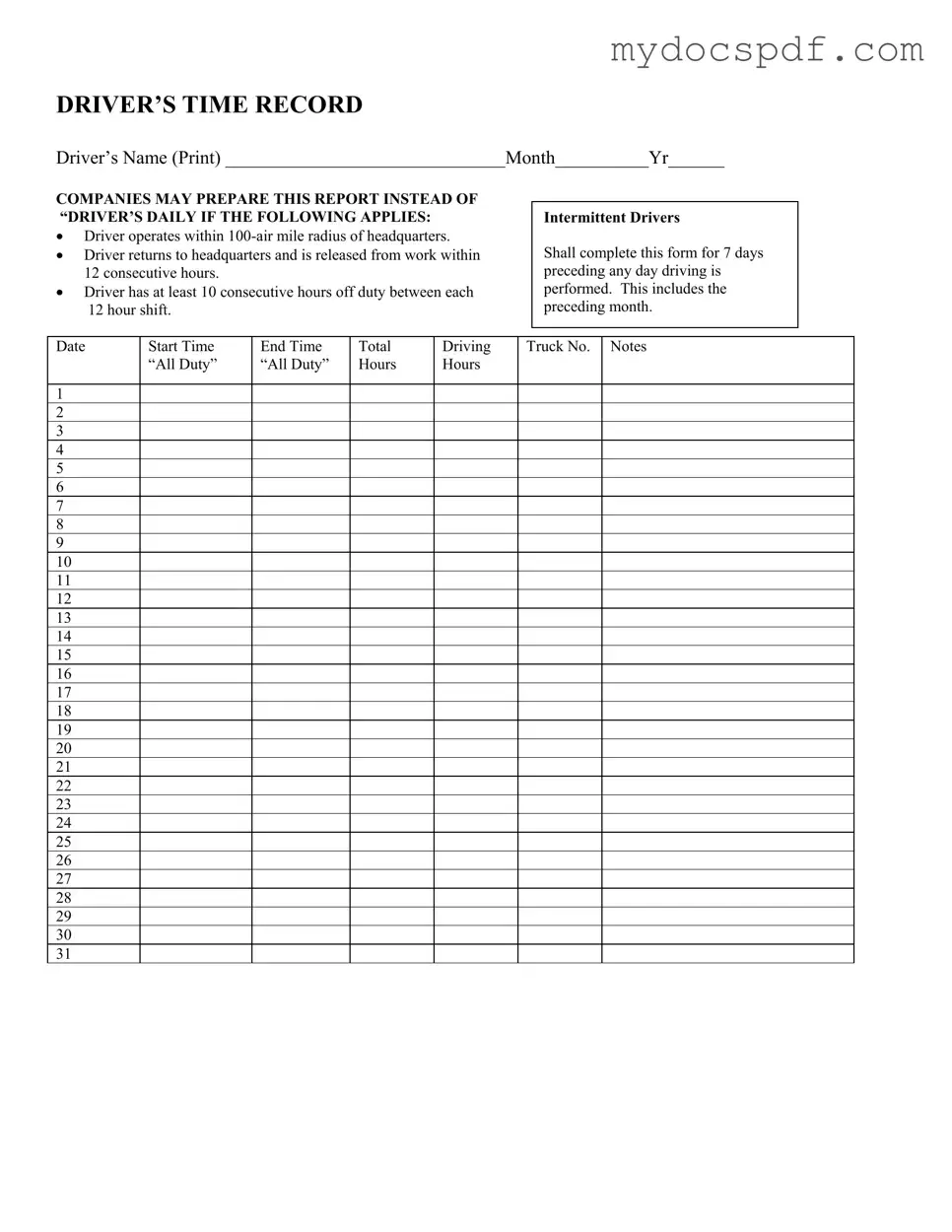The Driver Time Record form plays a crucial role in ensuring that drivers adhere to regulations regarding work hours and rest periods. This form is specifically designed for drivers who operate within a 100-air mile radius of their headquarters, allowing them to document their driving time efficiently. It is important for drivers to return to their headquarters and be released from work within 12 consecutive hours, as this promotes safety and compliance with industry standards. Additionally, the form requires drivers to have at least 10 consecutive hours off duty between each 12-hour shift, ensuring they are well-rested before getting back on the road. For intermittent drivers, the form must be completed for the seven days preceding any driving day, including the previous month, making it essential for accurate record-keeping. The form includes sections for the driver’s name, the month and year, as well as detailed entries for each day, capturing the start and end times, total driving hours, truck number, and any relevant notes. By maintaining this record, drivers can help ensure they meet all necessary regulations while promoting their own safety and the safety of others on the road.


